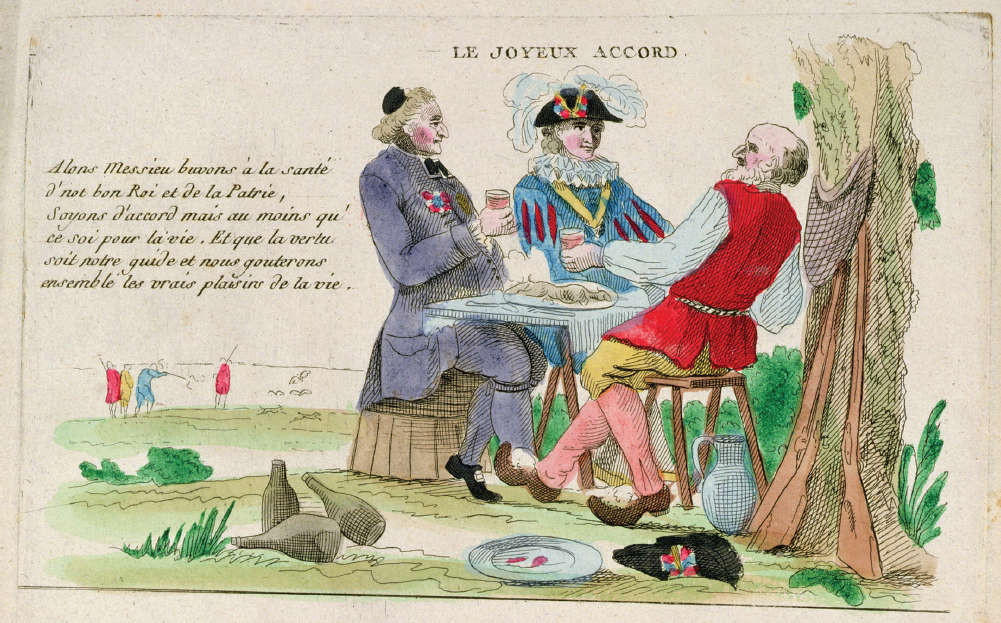Visual Source 16.1
The Early Years of the French Revolution
Like all major social upheavals, the French Revolution unleashed both enormous hopes and great fears, largely depending on an individual’s position in French society. Nonetheless, in the early stages of the revolution (1789–1791), many people believed that France could become a constitutional monarchy with a far more limited role for the king and that the three estates—clergy, nobility, and commoners—could live together in harmony. Visual Source 16.1, entitled “The Joyous Accord,” represents this phase of the revolution as it depicts the peaceful interaction of members of the three estates. The text reads: “Then Messieur we drink to the health of our good King and the Fatherland, that we may be in agreement, at least this for life. And that virtue may be our guide and we will taste together the true pleasures of life.”

Question
What changes during the first year of the French Revolution does this image reveal? Consider the activity portrayed in the painting and the posture of the three figures. What continuities with the past does it also suggest?
Question
How does it portray the ideal of national unity?
Question
How are the representatives of the three estates distinguished from one another?
Question
Notice the peasants hunting in the background. Keep in mind that before the revolution peasants who hunted on the estates of the nobility were subject to harsh punishment or even death. Why do you suppose the artist chose to include them in the painting?